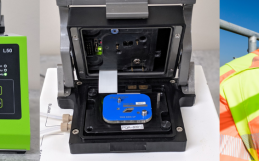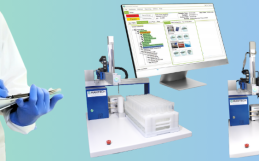Analysis of Surface Water Samples for Chemical Oxygen Demand via the PeCOD Method as Compared to Traditional Dichromate Method
Abstract:
Surface water samples in the Athabasca watershed are regularly monitored to ensure water safety across the watershed. In this study, chemical oxygen demand (COD) was monitored to evaluate organic matter and to enhance current monitoring programs. Over an eight-month period, MANTECH worked with Environment Canada’s National Laboratory of Environmental Testing (NLET) to study a new automated innovation, the PeCOD® Analyzer, developed by MANTECH. This COD method utilizes a new technology, PeCOD, which is a photoelectrochemical technique that directly measures dissolved COD in a sample in approximately ten minutes, without the need for any hazardous chemicals. Results obtained by the automated PeCOD® Analyzer system demonstrate that the COD measured using the PeCOD method validated a strong correlation to the COD measurement obtained by the traditional dichromate method.
Download the PDF here.
Introduction:
Between August 1 2012 and March 31 2013, MANTECH collaborated with NLET on a project involving the analysis of river and pond water in the Athabasca watershed. There is concern over environmental pollution in this area, due to hydrocarbon-associated contamination arising from rivers flowing through natural bitumen deposits and from anthropogenic activities such as oil sands mining. Results were compared for chemical oxygen demand (COD) when analyzed via the automated PeCOD® Analyzer versus traditional dichromate method. The PeCOD® Analyzer is a new innovation manufactured by MANTECH which enables the measurement of COD, from a single sample, in fifteen minutes or less. Due to the nature of the traditional COD method, this rapid capability has never been an option before.
COD is used as a measure of organic pollution, along with Biochemical Oxygen Demand (BOD). However, the standard BOD test requires five days to complete, and is therefore unable to provide continuous monitoring of organic load. COD is therefore often used for BOD screening or as an alternative measure of organic pollution. However, the traditional dichromate COD method utilizes hazardous and toxic materials, and has an analysis time of approximately three hours. Additionally, the dichromate method struggles with samples with low COD. Most Standard Methods have a minimum detection limit of 50mg/L, although a detection limit of 5mg/L may be obtained utilizing method 5220B.4b with reduced levels of accuracy. The PeCOD Analyzer® analyzes COD via the PeCOD COD method, which eliminates the need for hazardous chemicals, has a reporting limit of less than 1mg/L, and results can be obtained in approximately ten minutes.
The PeCOD COD method relies on green chemistry and nanotechnologies for determining dissolved COD in natural and wastewater samples in a simple, rapid, and direct way. The PeCOD method utilizes the charge originating from oxidizing organic species contained in the sample to measure COD. The core of the PeCOD technology is the sensor, which consists of a UV-activated nano-particulate titanium dioxide (TiO2) photocatalyst coupled to an external circuit. When a sample analysis is initiated, the sample is introduced into the sensor, the TiO2 is irradiated by UV light, and a potential bias is applied. The UV light creates a positive photo hole in the TiO2 sensor which is a very powerful oxidizing agent (+3.1 V) that will readily lead to the transfer of electrons from organic species in the cell. TiO2 has a much higher oxidizing power compared to dichromate (the chemical potential of dichromate is E° = 1.6V), meaning that TiO2 is better able to break the bonds contained within difficult organic compounds and liberate electrons. Since dichromate has less energy available to it to perform this function, the method relies on additional help in the form of heat, pressure and sulfuric acid. It is because of this increased oxidizing power that PeCOD is better able to measure a number of important organics such as nicotinic acid, benzene, diethylamine, certain carboxylic acids, alcohol, and more.
The goal of this project was to compare the results of the accredited analysis for COD of surface water samples utilized within the laboratory (the dichromate method) to the PeCOD results, and evaluate the correlation of the PeCOD measurement to the measurement of BOD.
Read the full surface water case study here.







